What This Blog Post on AI Governance Examples Covers
-
AI governance refers to the process that organizations use to manage data, models, personnel, and processes to ensure the responsible use of AI and compliance with relevant regulations.
-
Real-world examples, such as the EU AI Act, NIST AI RMF, and Singapore’s GenAI Framework, demonstrate how policy evolves into practical control systems.
-
Enterprises like Microsoft, Google, and IBM embed governance directly into their product lifecycles, ensuring fairness, transparency, and ethical standards are enforced before launch.
-
Operational tools, including bias audits, model cards, AI registries, and real-time monitoring, enable daily risk mitigation and compliance tracking.
- Knostic’s platform exemplifies governance in action by detecting knowledge oversharing, mapping AI interactions, and enforcing dynamic access policies across industries.
AI governance defines how organizations plan, enforce, and prove responsible AI. It establishes rules for data, models, people, and processes, encompassing labeling, access control, evaluation, and continuous monitoring. Its goal is to align innovation with trust, compliance, and accountability across every stage of the AI lifecycle. Strong governance ensures that organizations can innovate confidently while reducing risk exposure.
AI governance examples matter because theory alone is insufficient. Real-life cases demonstrate what to emulate and what to avoid. They expose gaps that policies alone miss. They also reveal how controls behave under pressure. From the EU AI Act to a biased hiring tool, in this post, you will see governance in action.
How Can AI Governance Examples Help Your AI Adoption
AI governance examples make abstract rules concrete. They demonstrate how risk tiers and controls apply to a single workflow, revealing where incidents originate and how to prevent them upstream. Also, they make accountability visible across teams and tools. AI governance in enterprises focuses your investments on safeguards that actually reduce loss, and also gives you language that your executives and auditors accept.
Well-built examples double as implementation playbooks, as they address scope and attributes, tie risk tiers to answer-time person-based access controls (PBAC), and specify KPIs. They are reusable across teams for Copilot/Glean-style search, compressing time to pilot while preserving auditability. Here, each example shows evidence packs, rollback plans, and a clear RACI so approvals don’t stall. Executives see cost, risk reduction, and compliance status in one view, transforming governance from abstraction into accountable delivery through unique governance platforms. The following sections showcase representative examples, aimed to broaden knowledge in the domain and offer implementation directions.
Policy & Regulatory Examples
Treat the following frameworks as the backbone of an interoperable compliance and risk program that turns principles into enforceable controls, audit-ready evidence, and production-grade assurance.
EU AI Act (2024)
The EU AI Act introduces a risk-based approach to regulating AI systems. It bans certain practices, tightly regulates high-risk uses, and requires transparency for specific, limited-risk cases. High-risk systems are subject to various duties, including risk management, data governance, human oversight, and post-market monitoring. Organizations that violate the Act may face fines of up to €35 million or 7% of global annual turnover, whichever is higher, reinforcing the urgency of compliance. Treat it as your default reference, especially if you operate in or serve the EU.
NIST AI Risk Management Framework (USA)
The National Institute of Standards and Technology (NIST) has developed an Artificial Intelligence Risk Management Framework (AI RMF 1.0). It is a voluntary, sector-agnostic playbook that governs, maps, measures, and manages AI risks. It helps teams design trustworthy systems and document decisions. Aligning with broader standards, it is widely adopted as a common language for AI security.
In July 2024, NIST released its Generative AI Profile to extend the RMF to LLM-specific risks, adding detailed guidance for testing transparency, bias, and data lineage. Unlike the EU AI Act, which is a binding regulation, the NIST AI RMF is a voluntary framework.
Singapore’s Model AI Governance Framework
Singapore published the Model AI Governance Framework for Generative AI on May 30, 2024. It offers guidance across nine dimensions, including accountability, testing and assurance, security, and content provenance. It is designed to be interoperable with U.S. resources, such as NIST’s AI RMF, enabling multinational firms to apply consistent standards globally.
“Content provenance” is central to fostering a trusted AI ecosystem. It refers to the ability to verify the origin and integrity of AI-generated material, ensuring transparency about whether information or media was created by humans, generated by AI, or modified by both humans and AI. This feature is crucial for mitigating misinformation and building user trust in GenAI systems.
Enterprise AI Governance Examples
Enterprises operationalize governance through internal standards and review gates. Microsoft’s Responsible AI Standard requires reviews for fairness, transparency, and security before release. Google’s AI Principles restrict uses such as weaponization and certain forms of surveillance. IBM’s AI Ethics Board provides a cross-functional review for major deployments. These examples demonstrate that governance must be integrated into product lifecycles.
Microsoft Responsible AI Standard
Microsoft’s Responsible AI Standard (v2), 2025 Responsible AI Transparency Report, represents a formal internal framework that governs the entire lifecycle of AI development. It incorporates everything from design and data collection to deployment and post-release monitoring. It mandates fairness, transparency, inclusiveness, reliability, safety, and security reviews before any AI product or feature is released. Every team must document intended use, potential harms, and mitigation steps, ensuring that systems align with six core AI principles. Microsoft continues to update the Standard through its Office of Responsible AI and the AETHER (AI and ethics in engineering and research) Committee, introducing new tools for automated model evaluation and expanding review coverage to Generative AI applications.
Google AI Principles
Google’s AI Principles outline the company’s commitment to developing technology responsibly. The framework prohibits AI applications for weaponization, mass surveillance, or any use that violates internationally accepted norms and human rights. It emphasizes accountability, privacy, and scientific excellence, ensuring that AI advances benefit society. In early 2025, Google updated its internal Responsible AI processes by expanding oversight committees and integrating model risk reviews into its AI Safety and Alignment teams. These updates reflect Google’s broader shift toward harmonizing its principles with global AI governance standards while maintaining a focus on innovation.
IBM AI Ethics Board
IBM’s AI Ethics Board is a cross-functional, enterprise-wide committee that evaluates AI initiatives for ethical, legal, and reputational risks. It integrates representatives from privacy, compliance, product, and research teams to ensure every deployment meets IBM’s standards for trust and transparency. The Board oversees reviews, advises on risk mitigation, and manages escalations related to fairness, accountability, and explainability. Unlike Microsoft’s procedural governance model, IBM’s approach emphasizes a human-centric review process, bringing diverse ethical perspectives into AI decision-making. This governance model is central to IBM’s approach to trustworthy AI, striking a balance between innovation and accountability.
Examples of Practical AI Governance Mechanisms and Tools
Bias auditing in finance tests credit and underwriting models for disparate impact before deployment. It forces teams to examine outcomes by protected classes and adjust features or thresholds accordingly. It also creates an audit trail that regulators can understand.
Model cards and datasheets standardize documentation for models and datasets. They describe purpose, data lineage, limitations, and evaluation results in plain language. Additionally, they help product managers and auditors determine if a model is being used outside its intended scope.
Human-in-the-loop in healthcare adds clinical judgment before any action. Doctors review AI recommendations and confirm or reject them. This reduces risk and improves trust. AI registries provide enterprises with a single inventory of all AI systems, their owners, risk levels, and associated controls. They make shadow AI visible and assign accountability. Continuous AI monitoring dashboards track drift, fairness, and leakage in real time. They turn governance from an annual exercise into a daily signal for engineering and compliance.
For practical guidance, see Knostic’s resources on AI governance best practices.
Cross-Industry Examples
AI governance is not confined to technology firms. It has become a defining factor for compliance, trust, and innovation across sectors. Industries such as healthcare, finance, and the public sector face the most stringent demands for oversight due to the sensitivity of the data and the impact of automated decisions. Each industry applies governance differently, but all share a common challenge to transform high-level regulations into enforceable, real-time controls.
Healthcare
In healthcare, governance must ensure both patient safety and regulatory compliance. AI-enabled diagnostic systems, many of which are cleared by the U.S. Food and Drug Administration (FDA), are required to meet explainability and transparency standards before approval. Hospitals utilize AI for image analysis, treatment planning, and workflow optimization. However, every model must demonstrate human oversight and traceability.
Knostic helps healthcare providers differentiate between retrieved data (explicit records from EMRs or databases) and inferred knowledge (insights generated by LLMs from multiple correlated inputs). It automatically flags when an inferred answer risks exposing protected health information (PHI) and prevents disclosure before it reaches the end user. It provides continuous audit trails that prove who accessed what knowledge and when, even when LLMs infer answers from distributed medical data.
Finance
Financial institutions rely on AI for fraud detection, credit scoring, and high-frequency trading. Before deployment, algorithms must undergo stress tests and fairness audits to ensure they don’t create market distortions or bias. Regulators, such as the United States Securities and Exchange Commission (SEC) and the private American Financial Industry Regulatory Authority (FINRA), are increasingly requiring model explainability and risk documentation. A common governance challenge in finance involves unauthorized access to sensitive forecasts or non-public performance data, such as internal earnings projections or confidential deal terms inferred through AI assistants.
Knostic detects these inference-driven exposures in real time, blocking access before such insights can be surfaced or shared. The solution enables financial firms to meet these obligations by continuously monitoring AI assistants and search tools for unauthorized data exposure, enforcing policy-driven access across departments, and maintaining compliance with the U.S. federal Sarbanes-Oxley Act (SOX), the EU General Data Protection Regulation (GDPR), and (FINRA) standards. Its dashboards provide risk officers with live visibility into AI behavior, transforming manual compliance sampling into continuous supervision.
Public Sector
Governance in the public sector emphasizes transparency, accountability, and the responsible use of data. Municipalities and agencies worldwide are implementing AI oversight boards to evaluate predictive policing, resource allocation, and citizen-facing systems. These boards demand clear documentation, bias testing, and public communication of how AI decisions are made. Knostic operationalizes citizen trust through transparent reporting features, such as public-facing model cards, automated decision logs, and explainability dashboards. These show how inferences are formed and why access decisions are made. Knostic strengthens governance programs by mapping sensitive knowledge across government repositories and ensuring that AI systems do not infer or share restricted information. With the solution, agencies can show compliance with GDPR, national security, and open-data governance AI policies while maintaining the trust of the citizens they serve.
Amazon: The Example of an AI Governance Failure
Amazon reportedly scrapped an experimental AI hiring tool in 2018 after it showed bias against women. The issue traced back to historical training data and proxy features that favored male-coded patterns. The lesson is that policy statements are not enough without robust testing and documentation. Early bias testing, feature review, and shadow deployments could have caught the problem sooner. Clear decision logs and rollback criteria help teams take action before harm affects the brand.
This case also reflects what NIST calls the need for a “socio-technical” evaluation approach in its AI Risk Management Framework (AI RMF 1.0). It recognizes that AI bias is not only a data or model problem but a systems problem involving human oversight, institutional processes, and cultural factors. Embedding this perspective, as emphasized in the Framework, ensures that technical audits are paired with human accountability and organizational governance measures. If such socio-technical evaluations had been integrated early, Amazon’s model could have been reviewed in the context of its hiring culture and data lineage, preventing bias from becoming systemic.
How Knostic Helps You Operationalize AI Governance
Global responsible AI frameworks define the “what”. Knostic operationalizes the “how” at the knowledge layer, where Copilot, Glean, and Gemini search and infer. This powerful platform provides:
-
Answer-time policy-based access control (PBAC) across prompts, tools, and outputs with block, or redact actions tied to need-to-know.
-
Continuous monitoring for oversharing and inference risk with alerts and SIEM events.
-
Tamper-evident inference lineage linking prompt, retrieval, decision, and output for audit readiness.
-
Knowledge graph of users, sources, and labels to expose indirect access paths and privilege creep.
-
Policy and label optimization to ensure Purview sensitivity rules align with runtime behavior.
-
Prompt simulation using real access profiles to find gaps before rollout.
-
No-code integrations with Copilot, Slack AI, and Glean to embed checks without redesigning data architecture.
-
Enhances existing tools like identity and access management (IAM), data loss prevention (DLP), and Purview to turn policy into enforceable, explainable controls.
What’s Next?
To visualize this workflow, Knostic offers a downloadable guide and overview through its published resources. Check it out to learn how organizations are leveraging the platform to progress from AI data audits to real-time policy enforcement across enterprise systems.
FAQ
• What is an example of AI governance in action?
A clear example is using Knostic to automatically detect when an LLM, such as Copilot, exposes confidential project data across departments. The system identifies and logs the event, adjusts policies, and prevents recurrence, turning oversight into active control.
• What industries have the strongest AI governance requirements?
Sectors such as healthcare, finance, and the public sector operate under strict frameworks like the Health Insurance Portability and Accountability Act (HIPAA), FINRA, and GDPR. Knostic supports these by mapping and monitoring AI-related data exposure, ensuring that sensitive knowledge stays within approved boundaries.
• How do companies practice AI governance today?
Enterprises deploy Knostic as a layer above existing DLP and Microsoft 365 stacks to govern the knowledge layer. They utilize automated audits, need-to-know enforcement, and real-time monitoring dashboards to demonstrate compliance and minimize manual review workload.

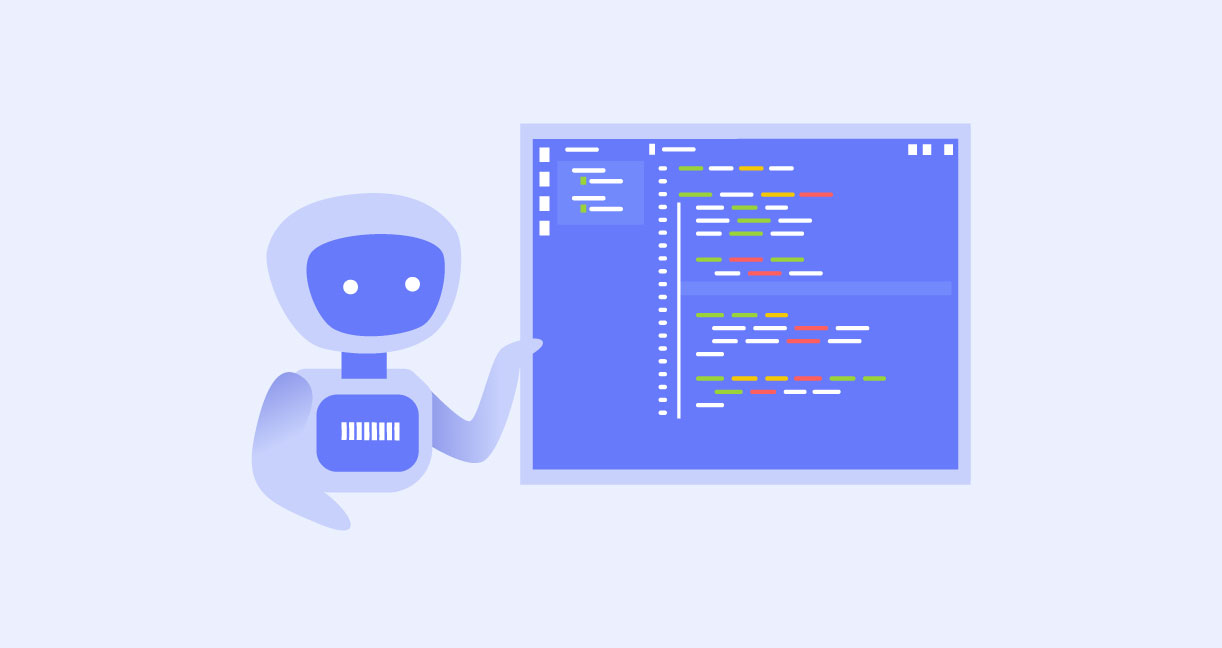
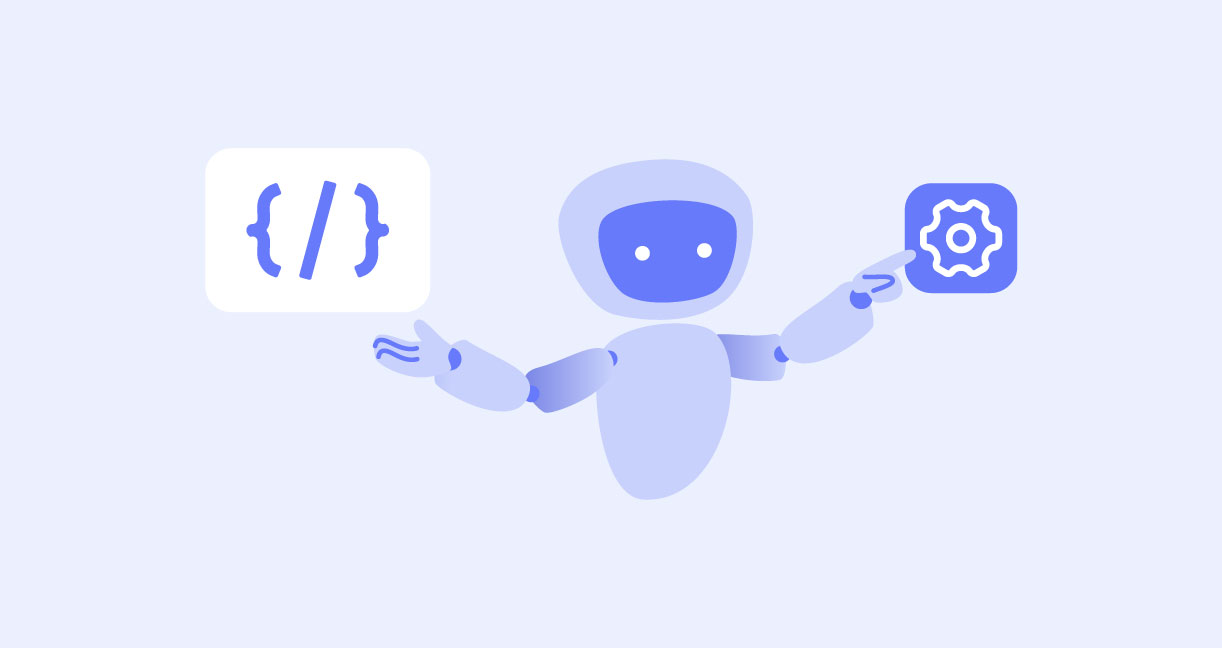



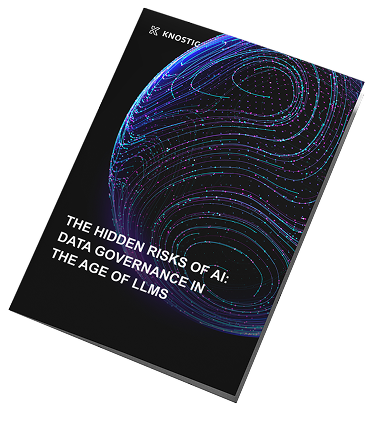
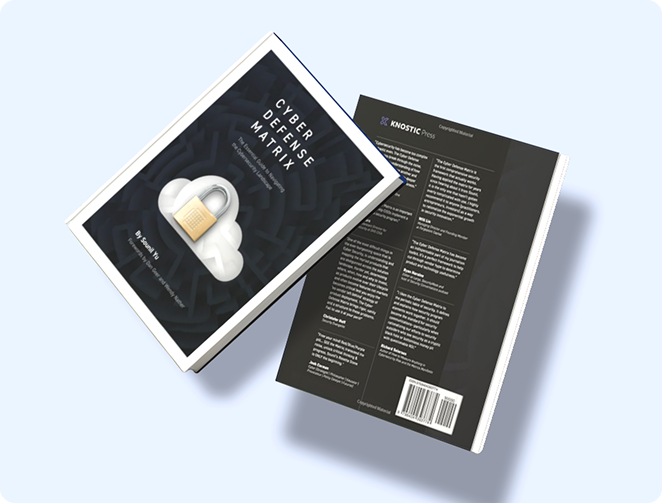
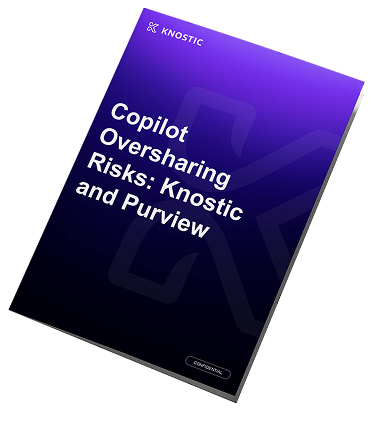
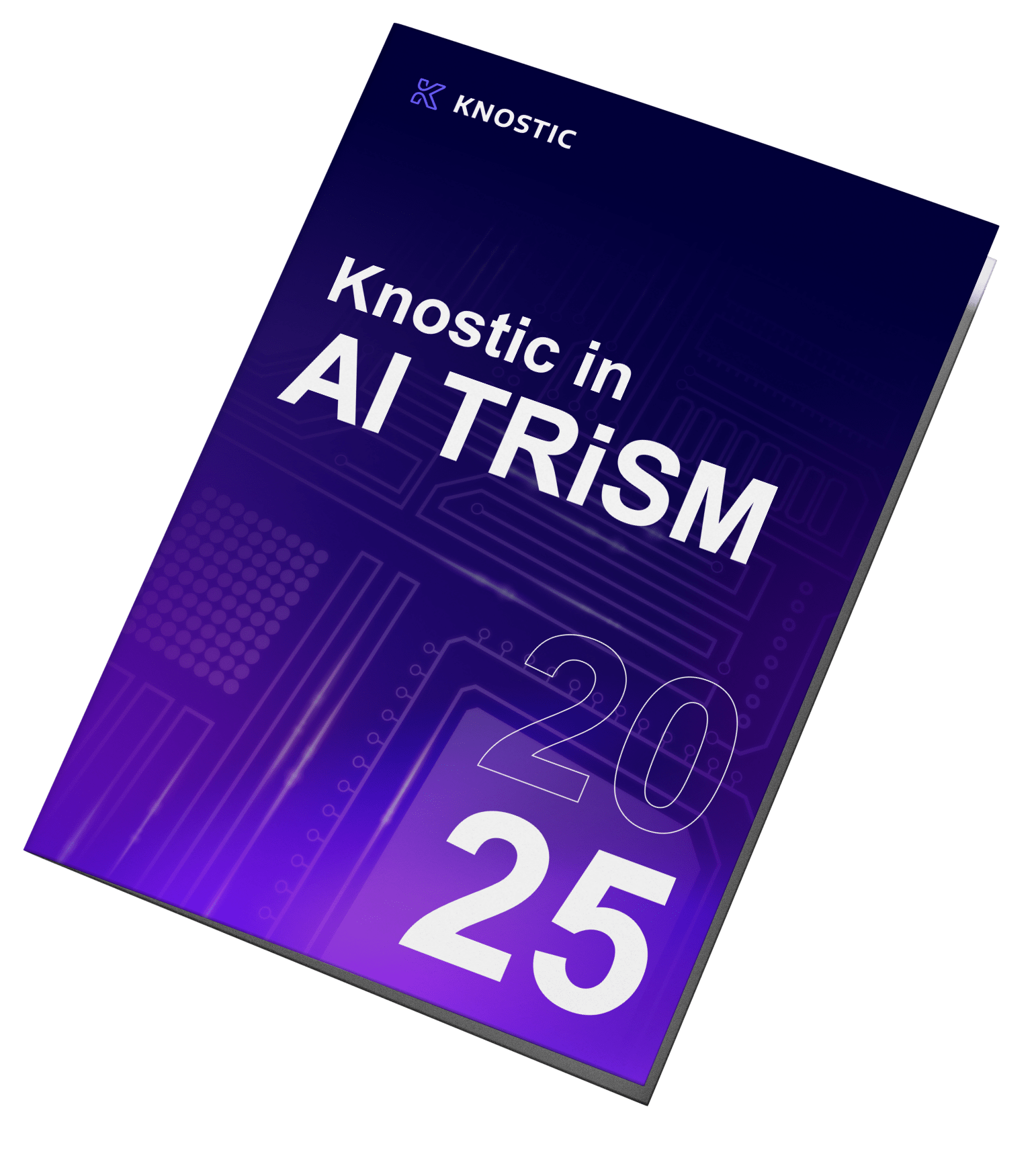
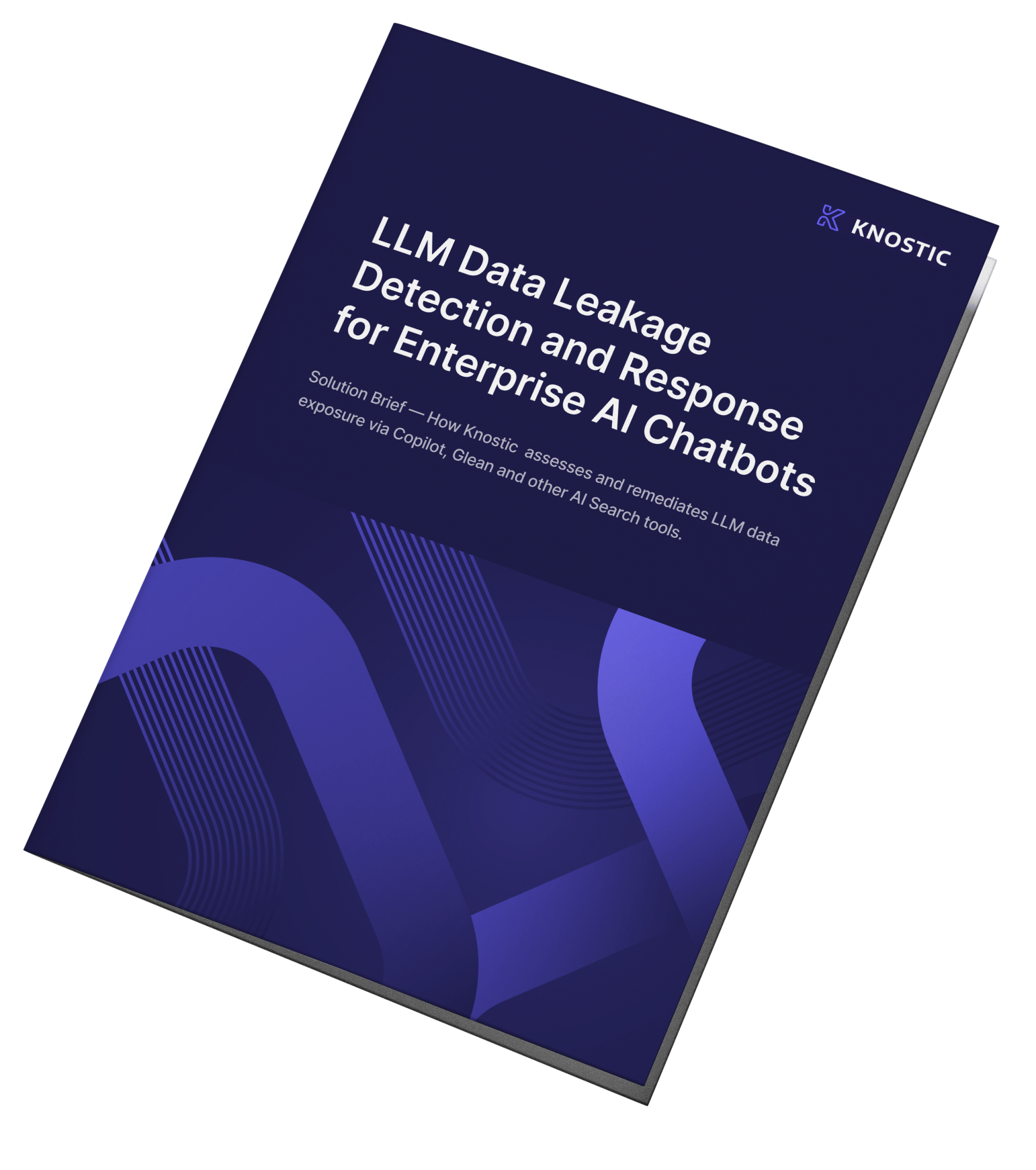
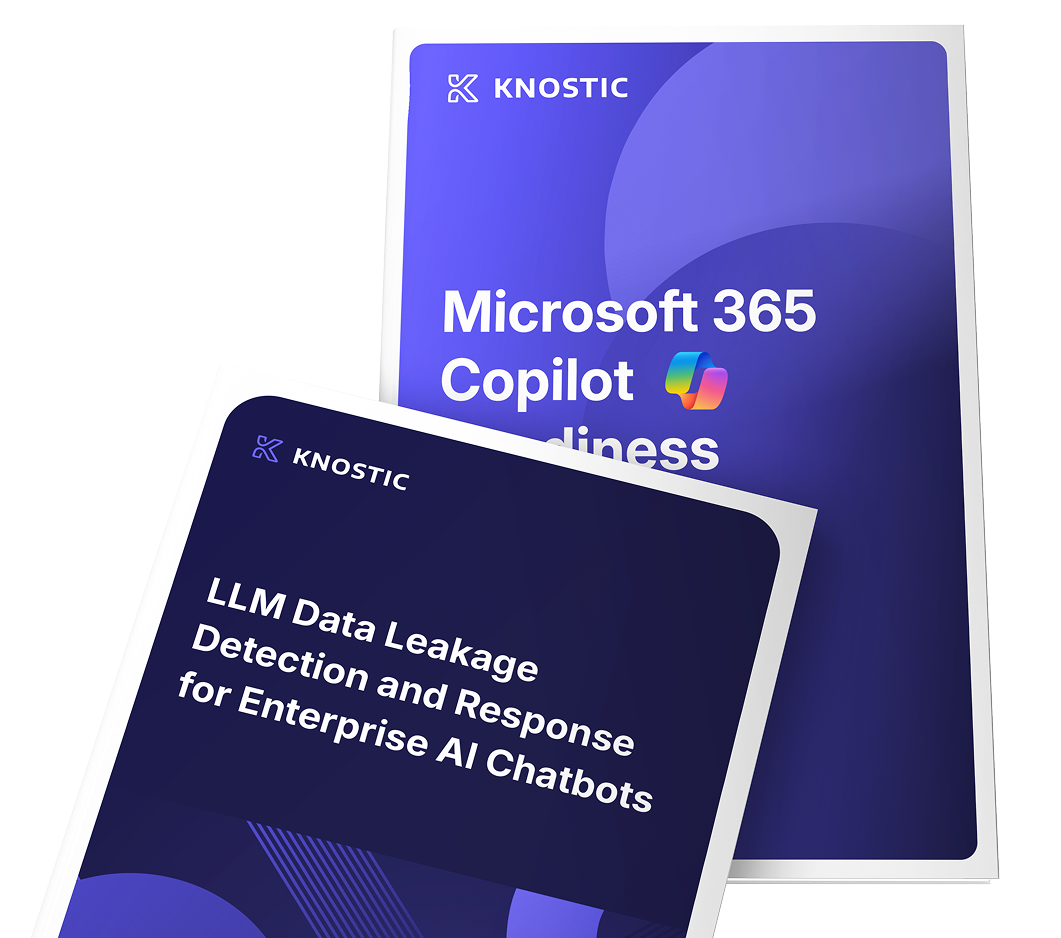
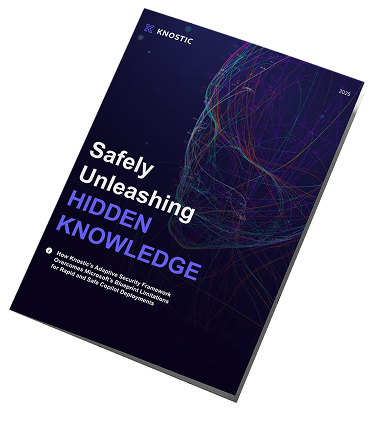
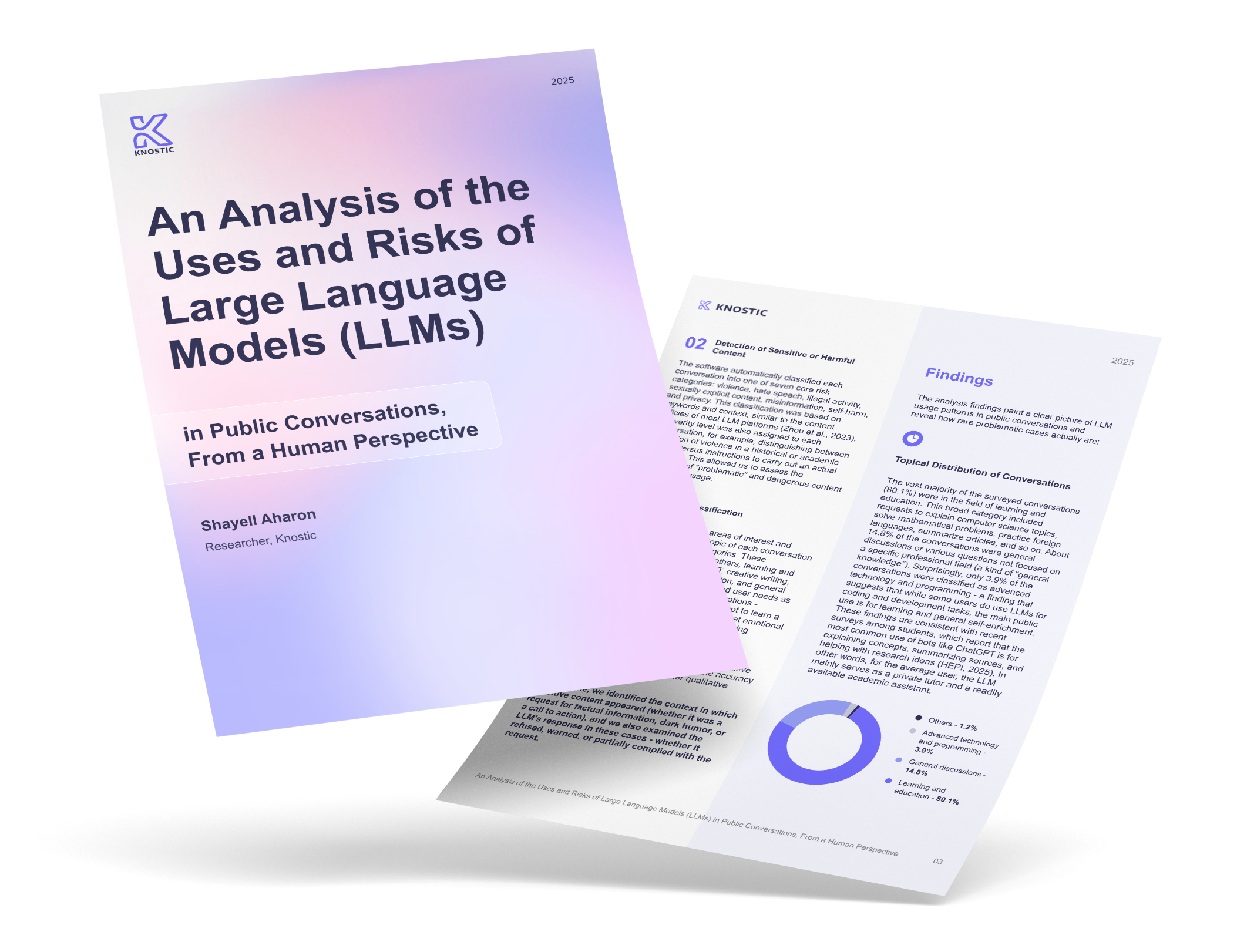



![AI Data Governance Guide for Enterprise Teams [2025]](https://www.knostic.ai/hs-fs/hubfs/What-is-AI-data-governance.jpg?width=520&height=294&name=What-is-AI-data-governance.jpg)


